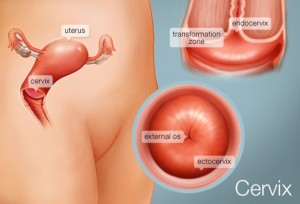PAP smear Calgary 
Cervical cancer screening:
Pap tests can save your life.
Cancer is a scary word. But the good news with cervical cancer is that it can mostly be prevented with screening and follow-up care.
By having Pap tests regularly starting at age 25, or 3 years after becoming sexually active (whichever is later), you can detect any abnormal changes in the cells of the cervix – before they have a chance to become cancer. When abnormal changes are found early, they can be treated early, so you stay cancer-free.
Cervical cancer is the second most common cancer in women worldwide, with about 500,000 new cases and 250,000 deaths each year, according to the WHO (World Health Organization). In much of the world Pap testing isn’t even available.
However, over the past 40 years, widespread Pap testing in Canada has resulted in far fewer deaths from cervical cancer – and that’s a trend worth continuing.
According to the Alberta Cancer Registry, there were 144 new cases of cervical cancer diagnosed in Alberta in 2008 and 30 deaths from the disease. It’s worth noting that 90% of these deaths were in women over the age of 40, which is why it’s important to continue cervical cancer screening as you get older.
The cervix is the lower 5 centimeters or so of your uterus (or womb) that joins with the top end of your vagina. It has an opening that allows menstrual period to pass from the uterus into the vagina and it also widens during childbirth for a baby to be born.
Preparing for your Pap test
Before your Pap test, here are a few things to keep in mind:
Try to make your appointment for a day when you won’t have your period (but if you have any abnormal bleeding, make an appointment with your healthcare provider right away).
- Don’t douche or use contraceptive creams or jellies in the 24 hours before the test.
- Don’t have sexual intercourse in the 24 hours before the test.
- Avoid using personal lubricants in the 48 hours before the test.
How is a Pap test done?
The test is done right in your healthcare provider’s office and only takes a few minutes.
Your healthcare provider will gently insert an instrument called a speculum into your vagina so that the cervix can be seen. Your healthcare provider then collects a sample of cells to send to a lab to be checked.
Does it hurt?
Cervical screening only takes a few minutes, and while it might be slightly uncomfortable, it should not be painful. It may help to take a few deep breaths to relax yourself and reduce tension in your body.
It’s completely normal to feel a little nervous or unsure about having a Pap test. If you’re worried or uncomfortable, talk it over with your healthcare provider first and they’ll do their best to put you at ease.
Benefits to being screened
90% of cervical cancer can be prevented by having Pap tests regularly.
Pap tests check for cervical cell changes caused by HPV, which can be followed closely to make sure they clear up. If needed, these abnormal cells can be treated so cervical cancer never develops.
Cervical cancer is rare in Alberta because many women have Pap tests regularly and are followed-up with by their healthcare providers when they have abnormal results.
Ref: http://www.screeningforlife.ca/cervicalscreening/about-cervical-cancer
Ref: http://www.webmd.com/women/picture-of-the-cervix

